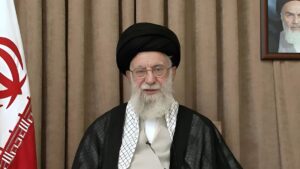The government of Nepal on Monday night announced that it has lifted its controversial ban on social media platforms following violent protests that left at least 19 people dead and more than 300 others injured.
The demonstrations, largely led by young citizens under the banner of Gen-Z, turned violent in Kathmandu and other parts of the country over the weekend.
Why Protests Broke Out in Nepal
Protests erupted after the government blocked 26 social media platforms, including Facebook, YouTube, and X (formerly Twitter), on Friday for not registering under new regulations.
This move sparked outrage among young Nepalis who heavily rely on these platforms for communication and activism.
Deadly Clashes With Police
Security forces responded with bullets, tear gas, water cannons, and batons when demonstrators tried to storm a restricted area near the Nepalese parliament.
Confirming 17 deaths in Kathmandu alone, police also reported nearly 400 people injured, including over 100 officers.
“I was there for a peaceful protest, but the government used force,” said Iman Magar, 20, who was hit in his right arm.
Government Response and Resignations
Prime Minister KP Sharma Oli initially defended the new rules, calling them “in the national interest.” But as protests intensified, Home Minister Ramesh Lekhak resigned during a cabinet meeting.
Later, Nepal’s Minister for Communication, Information, and Broadcasting, Prithvi Subba Gurung, announced that social media access would be restored in line with the protesters’ demands.
Situation in Kathmandu
A curfew remains in place across key areas of the capital, including parliament, the president’s residence, and Singha Durbar (the prime minister’s office).
Some demonstrators even climbed walls into the parliament compound and vandalized gates, prompting tighter security measures.
International Reactions
The United Nations called for an immediate and transparent investigation into the violence.
#Nepal: We are shocked by the killings and injury of protesters today and urge a prompt and transparent investigation.
We have received several deeply worrying allegations of unnecessary or disproportionate use of force by security forces during protests organized by youth… pic.twitter.com/KstvW4La92
— UN Human Rights (@UNHumanRights) September 8, 2025
UN rights office spokeswoman Ravina Shamdasani said:
“We have received several deeply worrying allegations of unnecessary or disproportionate use of force by security forces.”
Amnesty International also condemned the use of live ammunition against demonstrators.
Deeper Roots of Nepal’s Gen-Z Protests
Although the protests began over the social media ban, many demonstrators pointed to broader frustrations.
“But that is not the only reason we are gathered here,” said Yujan Rajbhandari, 24. “We are protesting against corruption that has been institutionalised in Nepal.”
Social media also amplified anger against so-called “Nepo Kids” — children of politicians flaunting wealth and vacations online while ordinary Nepalis struggle.
History of Platform Bans in Nepal
The recent ban followed earlier restrictions. In July, Nepal blocked Telegram citing fraud and money laundering. TikTok was banned for nine months until August last year.
While apps like Viber, WeTalk, Nimbuzz, and Poppo Live have registered under the government’s rules, major platforms like Facebook and Instagram have not. Meta has yet to comment.
Heightened Security Along Borders
Security has been tightened in India’s Uttar Pradesh districts bordering Nepal. Within Nepal, curfews continue in Terai regions near the Indian border, and the army has been deployed to maintain order.



